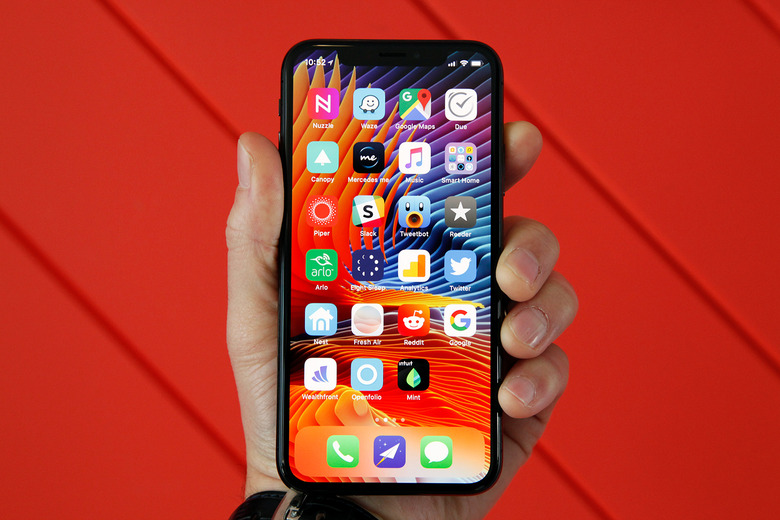Two More Reasons I'll Never Switch From The iPhone To Android
Earlier this week, I wrote a piece about why I won't switch from the iPhone to Android anytime soon. In fact, the odds are fairly good that I'll never switch from iOS to Google's mobile platform, even down the road in the future. When I discuss this topic on the site, I typically point to a few main reasons for my decision. As an iPhone user since the very first model was released in 2007, I'm definitely locked into Apple's ecosystem. But the fact of the matter is that I enjoy Apple's ecosystem and its products. The overall quality of the iOS user experience is vastly smoother and more refined than Android, even when considering the current messy state of iOS 11. Apple's mobile and desktop platforms also feature much more streamlined integration than Google's Android and Chrome OS platforms. Google is still where I turn for most of my services, and I still dream of a day when Google has completely taken over my iPhone. But Apple's hardware is just too good, and its platforms and user experiences are just too clean to abandon.
In the piece I wrote this week, I covered another reason I stay away from Android and stick with the iPhone. Android fans often complain about Apple's "walled garden" that restricts third-party apps from accessing many core OS functions and therefore offering many features seen as crucial to the Android experience. Of course, those same policies prevent things like this scary new mega, monster, mutant Android malware from being possible on iOS devices. Now, on Wednesday morning, two new stories popped up that cover even more reasons I stick with the iPhone and won't ever jump ship to Android.
Google I/O 2018 kicked off on Tuesday and Google held its big keynote yesterday at 10:00 AM. The company covered a ton of interesting new features coming to Android, including a few things that are nothing short of mind-blowing. Of course, the beauty of Google is that it's a software company first, so most of the biggest things covered during Google I/O 2018 will be made available on iOS devices as well, like whatever end user services are born of Google Duplex, which was easily the most impressive thing Google showed off on Tuesday.
While the web rightfully continues to buzz about Google and its announcements from the event, two things are happening over on the Apple side of the fence that serve as fresh reminders of yet another way Apple's platforms offer key benefits over Android.
First comes the news that Apple is cracking down on apps that share location data with third parties. Policies preventing these practices have been in place in Apple's iOS developer guidelines for quite some time. Renewed public interest in the topic has resulted from the Facebook-Cambridge Analytica scandal and Europe's new General Data Protection Regulation (GDPR) though, and now Apple is taking important steps to protect users.
Apple finally decided to start enforcing guidelines on selling location data
via @jeromep1970 pic.twitter.com/YKAWfMBq35
— Thomasbcn (@Thomasbcn) May 7, 2018
Apple is clearly in the midst of an audit of third-party apps to ensure that this policy is adhered to, and in the end it'll be iPhone and iPad users who benefit.
The second news item that helps illustrate Apple's customer-first stance is something that was found hiding in the code in Apple's latest developer beta, iOS 11.4 beta 4. It's called "USB Restricted Mode" and it first appeared in an iOS 11.3 beta, but was removed before the software was released to the public. Apple likely had some wrinkles to iron out before it was ready for primetime, and now it appears as though USB Restricted Mode will debut in the release version of iOS 11.4.
What is USB Restricted Mode? Here's an excerpt from a post on the Elcomsoft blog:
The functionality of USB Restricted Mode is actually very simple. Once the iPhone or iPad is updated to the latest version of iOS supporting the feature, the device will disable the USB data connection over the Lightning port one week after the device has been last unlocked.
At this point, it is still unclear whether the USB port is blocked if the device has not been unlocked with a passcode for 7 consecutive days; if the device has not been unlocked at all (password or biometrics); or if the device has not been unlocked or connected to a trusted USB device or computer.
If you're still unclear, this is a shot fired directly at the NSA, FBI, and other intelligence and law enforcement agencies. That's right, Apple is protecting user data not just from hackers and malware, but also from intelligence agencies that regularly break into devices in order to obtain and analyze private data.
Devices like the notorious Graykey encryption-breaking box are used by law enforcement to crack PINs and passcodes using brute force attacks. With Apple's new USB Restricted Mode enabled, however, these devices would no longer be able to connect to iPhones and iPads that have been locked for at least seven days.
Protections like this are as much a marketing ploy as they are a service to users. Apple's continued message of "we're not Google and Facebook, we care about your privacy and we don't sell your data" has and will continue to be instrumental. But the end result is the same as it would be if Apple were truly pure of heart, and I know my personal data is protected on my iPhone far more securely that it would be on Android.
